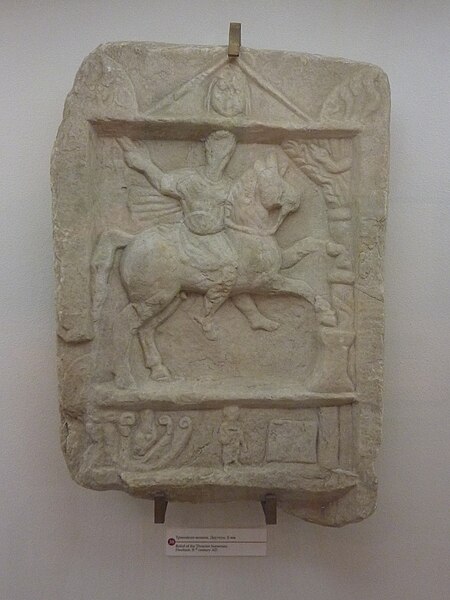تعود سيرة القديس جرجس والتنين إلى السيرة التقديسيَّة لمار جرجس الشرقية في الأصل،[1][2] واعيدت السيرة للظهور مع الصليبيين لتصبح جزءًا من الروايات الفروسية. أقرب تصوير معروف للسيرة يعود للقرن العاشر أو القرن الحادي عشر في كابادوكيا،[3] وإلى القرن الحادي عشر في جورجيا؛[4] وسابقًا، في شكل أيقونة أرثوذكسية شرقية، والتي تصور جرجس جنديًا وتعود إلى القرن السابع الميلادي على الأقل. أقرب سرد للسيرة والذي يتضمن ذكر التنين هو نص جورجي يعود إلى القرن الحادي عشر.[5]
ذكرت سيرة مار جرجس والتنين في الأسطورة الذهبية والتي تعود لعام 1260.[6] أضحت هذه القصة تدريجيًا جزءًا من التقاليد المسيحية وترمز له في لوحات أيقونية وتماثيل. إيقونة القديس والتنين تعتبر رمز وطني لمدن مثل بيروت، وجنوا وموسكو، وحتى لدول مثل انكلترا، وروسيا، واليونان، وجورجيا، والبرتغال وفلسطين وغيرها ممن يعتبرون جرجس شفيع الدولة أو المدينة حسب التراث المحلي المسيحي. كما ويستخدم الرمز في العديد من المهرجانات المسيحية.[7]
معرض صور
مراجع
- 'To the Glory of St George' in: Ingersoll, Ernest, et al., (2013). The Illustrated Book of Dragons and Dragon Lore. Chiang Mai: Cognoscenti Books. ASIN B00D959PJ0
- Robertson, The Medieval Saints' Lives (pp 51–52) suggested that the تنين motif was transferred to the George legend from that of his father fellow soldier saint, تادرس المشرقي. The Roman Catholic writer ألبان باتلر (Lives of the Saints) was at pains to credit the motif as a late addition: "It should be noted, however, that the story of the dragon, though given so much prominence, was a later accretion, of which we have no sure traces before the twelfth century. This puts out of court the attempts made by many folklorists to present St. George as no more than a تنصير of pagan mythology."
- Walter 2003:128, noted by British Museum Russian Icon "The Miracle of St George and the Dragon / Black George". نسخة محفوظة 05 فبراير 2012 على موقع واي باك مشين.
- Christopher Walter, The Warrior Saints in Byzantine Art and Tradition 2003:141, notes the earliest datable image, at Pavnisi, Georgia (1154–58)
- Patriarchal Library, Jerusalem, codex 2, according to Christopher Walter, The Warrior Saints in Byzantine Art and Tradition 2003:140; Walter quotes the text at length, from a Russian translation.
- Margaret Aston, Faith and Fire Continuum Publishing, 1993 page 272
- Christian Roy, 2005, Traditional Festivals page 408; Dorothy Spicer, Festivals of Western Europe, (BiblioBazaar), 2008 , page 67



